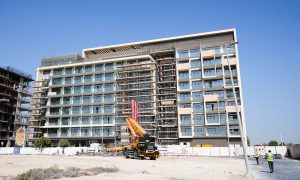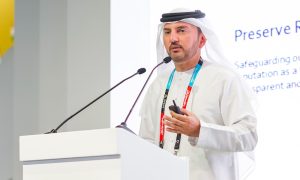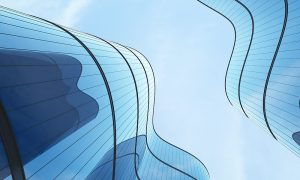The future of green design
Experts in sustainable design gathered in Dubai last month to explain why retrofitting existing buildings could be the only way to meet green building targets
 It is no secret the construction industry is one of the most wasteful, with inefficient HVAC, lighting and hot water draining one third of the world’s total wasted energy. Yet implementing green building codes such as BREEAM, LEED and Estidama will not be enough if the world is to meet the United Nations carbon reduction targets.
It is no secret the construction industry is one of the most wasteful, with inefficient HVAC, lighting and hot water draining one third of the world’s total wasted energy. Yet implementing green building codes such as BREEAM, LEED and Estidama will not be enough if the world is to meet the United Nations carbon reduction targets.
Last year’s climate change conference in Copenhagen ‘Cop2010’, committed to an 80% reduction in worldwide carbon emissions by 2050; yet even if every building constructed between now and 2050 is carbon neutral, we will still not meet that target. This shocking news was delivered by professor Bassam Adbel-Karim Abu-Hijleh, head of Sustainable Design of the Built Environment at the British University in Dubai.
Presenting to more than 100 delegates at Enpark’s second Green Brunch held in Dubai last month, he warned: “We have three options: business as usual until everything runs out and the environment is devastated; find other sources of energy without tackling our actual usage or thirdly, reduce consumption. That is the only viable solution to save the environment and enhance our quality of life.”
The Green Brunch was the second seminar hosted this year by environmental advisor Enpark. Exploring the benefits of retrofit, representatives from Dubai Chamber of Commerce, TECOM and the German Emirati Joint Council for Industry and Commerce discussed the outcomes of their own retrofit programmes.
According to each, the benefits reach far and wide; from reduced emissions to increased profits and enhanced indoor environmental quality (IEQ).
Easy being green
Sougata Nandi, executive director of asset management and sustainable development for TECOM Business Parks explained how the group is working on retrofits for up to 80 buildings, each in a different stage of its lifecycle and each posing a different challenge.
Nandi, shared a five-step framework (see box-out), naming reduced facilities management costs, job creation in new industries, increased market value and the “improved health and experience of occupants”, as key benefits to inspire change.
Among the solutions promoted were green walls and roofs, advanced windows with double or triple glazing, reflective barriers and low emission (low-e) technology; LED lighting; using solar power to heat water, district cooling and insulation.
Citing Dubai’s The Atlantis hotel as an example, he said replacing glass curtain walls with 5cm of insulating cladding, reduced peak cooling by 17%.
Internationally, when the Empire State Building was refurbished last year, US $20 million was invested in insulation, state-of-the-art windows and advanced cooling plant chillers. The steps reduced annual CO2 emissions by 105,000 metric tons and the energy saved is expected to reduce annual bills by $4.4 million providing a return in three years.
“This is about knowledge; the same solution won’t work for everybody,” asserted Nandi.
Naming over design as the root cause of problems, he added: “If the job is done right in the first place, this isn’t necessary.”
“There are no technological challenges, only attitude. Green efficiency should be in the psychology and philosophy of the management.”
Adding it up
Such attitudes and philosophies underpinned the retrofit of the Dubai Chamber of Commerce building in Bur Dubai. The project began in 1996 and in 2009 the building became the first in the Arab world to receive LEED rating.
During his presentation, Jugath Gunawardena, manager of projects & building development from Dubai Chamber of Commerce said: “Reducing air conditioning by one degree will reduce consumption by 9% and instilling an organisational culture will cultivate good habits.”
The Chamber’s retrofit began in 1996, at a time when “nobody knew about retrofit. But we wanted to lead by example,” said Gunawardena.
“We wanted to move with the times and we achieved that at no [extra] cost. If you can’t ask for a budget to go green it is something you can do with an operating budget,” he continued.
Simple steps such as individually controlled HVAC to lights, new waste-recycling systems, green purchasing policies, the removal of waste-paper baskets and water boilers, have reduced water consumption by 77%, energy consumption by 47% and greenhouse gas emissions by 37%. The changes, which were made with existing budgets, have saved $1.9 million to date.
Today Gunawardena’s message is clear: “An environmentally-friendly building is not as expensive as companies think”.
However, professor Bassam said that a “commercial mentality” and government subsidies which encourage reckless behaviour need urgent reform.
“People are not scared enough to do anything. Politics plays a role and everyone wants to wait until someone else does it first. But in doing so they are making things more difficult.
“If we had acted 10 years ago we would not have the problems we have now; now we need to clean up more and buildings from 15 years ago need retrofit.”

























